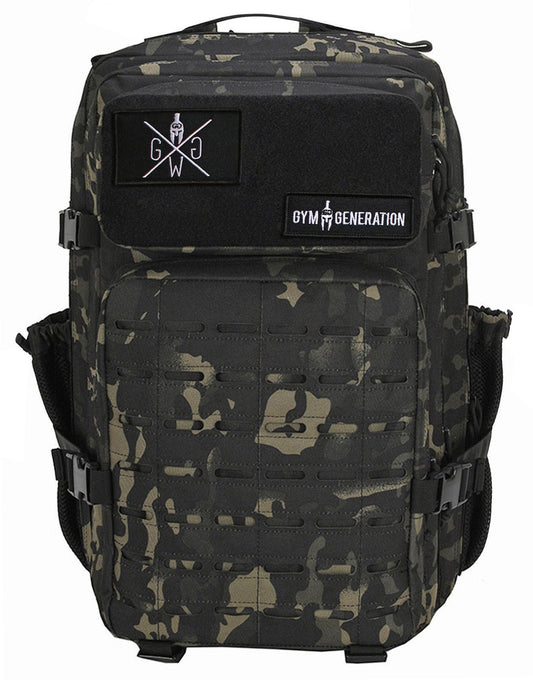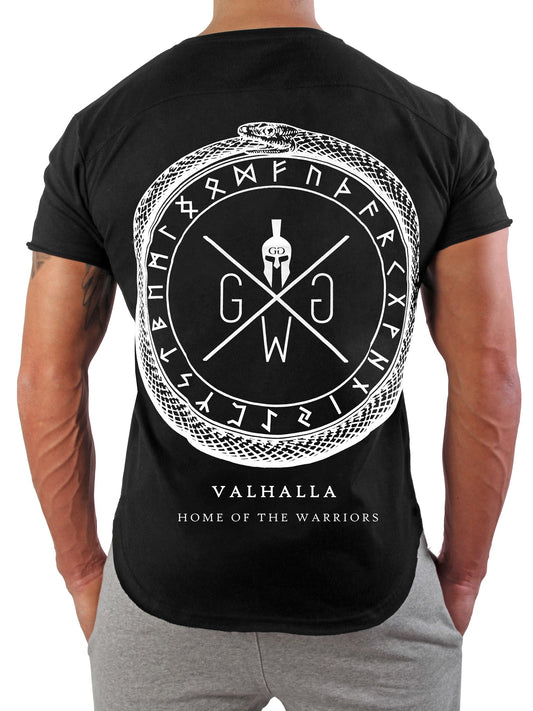
Calisthenics: The Art of Body Control
Calisthenics has become an increasingly popular fitness trend in recent years. But what does this term actually mean? In this blog post, we will delve deeply into the origins of calisthenics. In addition, we will examine the advantages of this training method compared to classic strength training, clarify the question of whether you can build muscle mass through calisthenics, and finally present a possible training plan and the most important exercises.
The emergence and origin of Calisthenics
Calisthenics is not a new invention, but has its roots in ancient times. The term "calisthenics" comes from the Greek and consists of the words " kalos" (beautiful) and " sthenos" (strength) . Calisthenics was originally developed as a type of physical exercise to promote general fitness.
Over time, calisthenics has developed into a discipline that combines body control, flexibility and muscle strength . Especially in recent years, calisthenics has gained popularity through platforms like YouTube and Instagram, as more and more people have discovered the aesthetics and diverse possibilities of this training method.
Advantages of calisthenics over classic strength training
Calisthenics offers a number of advantages compared to classic strength training in the gym. One of the biggest advantages is that calisthenics does not require expensive machines or free weights. All you need is your own body and, if necessary, a stable pole or a raised surface.
Another benefit of calisthenics is the improvement in functional strength.
Training with your own body weight activates several muscles at the same time, which leads to better coordination and stability. In addition, the small stabilizing muscles are also used, which can prevent injuries.

The perfect calisthenics training plan
When creating a calisthenics training plan, it is important to train all muscle groups in a balanced way and to pay attention to both strength and flexibility. Here is an example of an effective training plan:
Warm up : The basis for a successful workout
Start with a light cardio workout to warm up muscles and get your heart rate up. A short run or jump rope workout is a good warm-up exercise.
Basic exercises: strength, endurance and flexibility
Start with basic exercises like push-ups, squats, lunges, and planks. Do these exercises in different variations and reps to adjust the intensity.
Once you've mastered the basic exercises, you can move on to more advanced exercises. Examples include muscle-ups, handstand push-ups, pistol squats, and front lever holds. These exercises require more strength and stability and will help you increase your progress.
Core training: Strength from the center
Don't forget to train the core of your body. Exercises like planks, Russian twists, and hanging leg raises are great options for strengthening your abs and core stability. Core training, also known as trunk training, is an essential part of a holistic fitness program. It focuses on strengthening the core muscles, including the abdominals, back, pelvis, and hips.
Some reasons why core training is so important:
Improved Body Stability: The core is the center of our body and plays a crucial role in stabilizing the body during movement. A strong core promotes body stability and improves posture. A stable base of the body is important to avoid injury and to perform efficient movements in other areas of training, such as weightlifting or running.
Back Pain Reduction: Many people suffer from back pain, often due to weak core muscles. Regular core training can strengthen the muscles around the spine, resulting in better spinal support and reducing the risk of back injuries and pain.
Improved Athletic Performance: Whether you're an athlete or a hobbyist, a strong core is critical to optimal athletic performance. Many sports require good core stability and strength, be it running, swimming, golf, tennis or soccer. A strong core allows for better power transfer from the upper body to the lower body and vice versa, resulting in improved performance and coordination.
Improving balance and coordination: A well-developed core supports the balance and coordination of the body. The core muscles help maintain balance and balance body movements in different positions and situations. This is especially important for activities like yoga, pilates, or dancing that require good body control.
Aesthetic Appearance: A strong and defined core can contribute to an aesthetic appearance. Well-developed abs and a slim waist can boost confidence and support healthy posture.
stretching and flexibility
After a workout, it's important to stretch your muscles to improve flexibility and prevent muscle soreness. Make time for a stretching routine that covers all major muscle groups.
It is advisable to adapt the training plan to your individual goals and needs. Start with an appropriate number of reps and sets, and gradually increase the intensity by either doing more reps or doing more difficult variations of the exercise. However, always make sure you maintain proper form and technique to avoid injury.
Can calisthenics build muscle mass?
The question of whether you can build muscle mass through calisthenics is often asked. The answer is yes, definitely! Calisthenics can be effective for building muscle mass as long as you use the right training principles.
The key component to building muscle in calisthenics is progressive resistance. This means that you must continually increase the intensity of your training to challenge and stimulate the muscles. You can do this by increasing the number of repetitions, doing heavier variations of the exercise, or using additional weight such as weighted vests or weighted backpacks.
Weight Vest by Gym Generation >> Training Vests
In addition, a balanced diet with sufficient protein and calories is important to support muscle growth. Make sure you're getting enough high-quality protein sources like meat, fish, eggs, legumes, and dairy to provide your body with the building blocks it needs to build muscle.
Calisthenics is a fascinating training method that has its roots in ancient times and has developed into a popular fitness discipline. The advantages of calisthenics compared to classic strength training are flexibility, functional strength development and minimal equipment requirements.
A good calisthenics training plan should target all muscle groups and include both strength and flexibility. With progressive resistance and a balanced diet, calisthenics can definitely build muscle mass. However, it takes time, patience, and continuous progress to achieve the desired results.
The most important exercises in calisthenics
Push-ups: A basic exercise that strengthens the upper body, particularly the pecs, shoulders, and arms.
Pull-Ups: This exercise targets the upper back, shoulders, and arm muscles. There are several variations, such as wide-grip or narrow-grip pull-ups.
Squats: Squats train the leg muscles, especially the thigh muscles. You can also make them more challenging with a one-legged variation called pistol squats.
Lunges: Lunges strengthen the leg muscles and improve stability. You can do them forward, backward, or sideways.
Handstand (Handstand Hold): The handstand is an advanced exercise that challenges the entire upper body and core muscles. Start with wall supports and slowly work your way up to free handstands.
Planks: Planks are great for strengthening core muscles. Maintain a stable position by leaning on your forearms and toes and keeping your body straight.
Dips: Dips are an effective exercise for your triceps and chest muscles. You can do them between parallel bars or with the help of a bench or elevated surface.
There are of course many other exercises and variations in calisthenics, but these are a good starting point for building your fitness and strength.
So grab a mat, find a bar or elevated surface, and start your calisthenics adventure today!
































